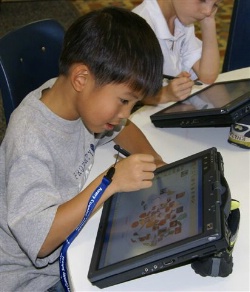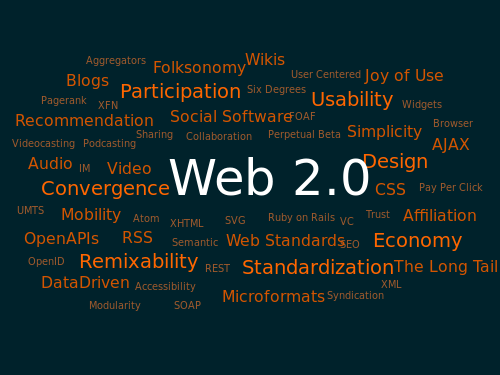Of Snow Days and Sick Days
Since I have been within range of my couch for the past 3 days, I finally had time to get caught up on Assignment 3a for ds106.
In What Is Web 2.0 (2005) Tim O’Reilly summarized that Web 2.0 involves:
- small sites and narrow niches
- users who add value
- perpetual beta
- co-operation rather than control
- access from a variety of devices and platforms
Despite the fact that this description sounds like my classrooms, it’s really so much more!
While reading I was struck by 2 things:
- How much I don’t know (I had to look up what Bit Torrent was)
- How accurate his predictions were from 6 years ago
One quote, in particular really matched my state today:
“If an essential part of Web 2.0 is harnessing collective intelligence, turning the web into a kind of global brain, the blogosphere is the equivalent of constant mental chatter in the forebrain, the voice we hear in all of our heads.”
The number of times I followed links to see examples of what was being discussed ended up filling most of my day. I had no idea about Alternate Reality Games – now I really want to try one.

In Bryan Alexander and Alan Levine’s article, “Web 2.0 Storytelling: The Emergence of a New Genre”, they described digital storytelling as a combination of micro-content and social software.
I realized 2 things:
- You’ve got to do it to understand it – until I started this blog, played around with Prezi, tried After Effects and made actual notes in Diigo, I really didn’t know their strengths or weaknesses even though I knew what they did
- Similarly, creativity is key. There should be an element of art in what we ask students to do at all levels of education. Why not add an element of fiction to learning the water cycle? Why not tell the story in 5 frames?
“Some projects can be Web 2.0 stories, while others integrate Web 2.0 storytelling practices. Yet storytelling approaches can work on a smaller scale also. A single course blog, for instance, tells the class “story.” Considering the course blog as a narrative project, an instructor thinks not in terms of producing static content but instead in terms of capturing an audience, of adding an emotional hook to the content. Lecturers are familiar with telling stories as examples, as a way to get a subject across. They end discussions with a challenging question and create characters to embody parts of content (political actors, scientists, composite types). Imagine applying those habits to a class Twitter feed or Facebook group.
For now, perhaps the best approach for educators is simply to give Web 2.0 storytelling a try and see what happens. We invite you to jump down the rabbit hole. Add a photo to Flickr and use that as a writing prompt. Flesh out a character in Twitter. Follow a drama unfolding on YouTube. See how a wiki supports the gradual development of a setting.”
Alan Levine’s list of 50+ Storytelling Tools should be a part of all my future unit planner meetings.

Leave a Reply